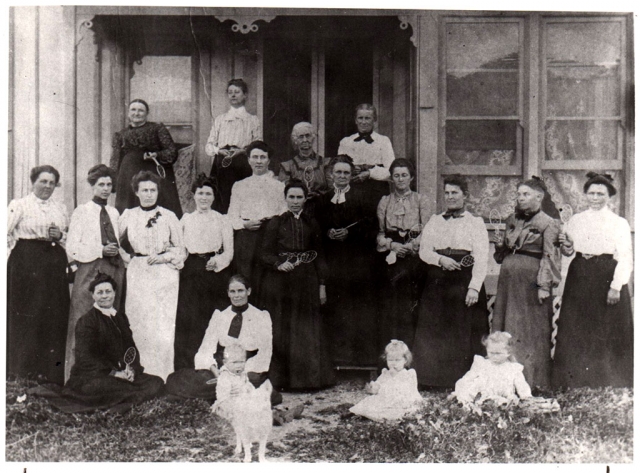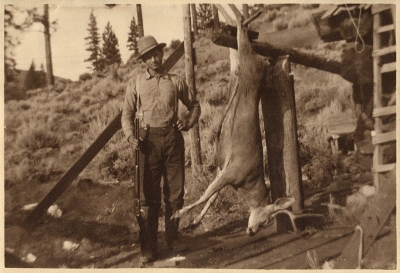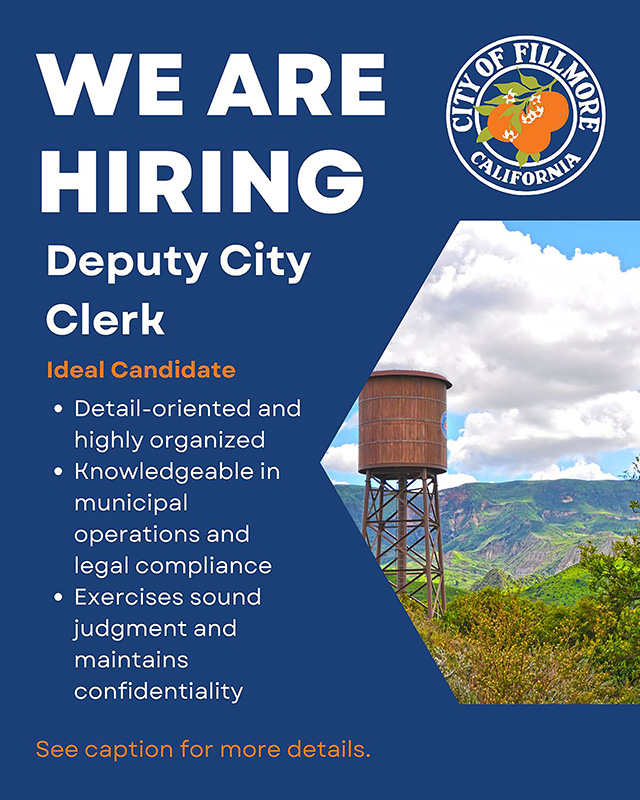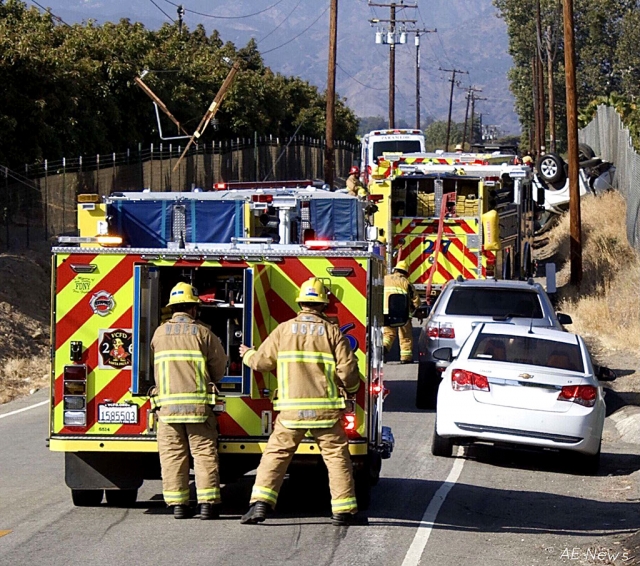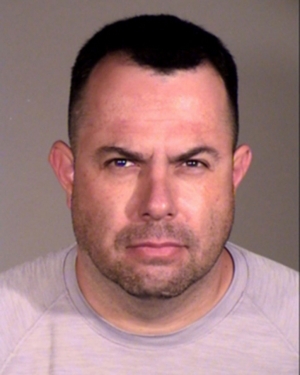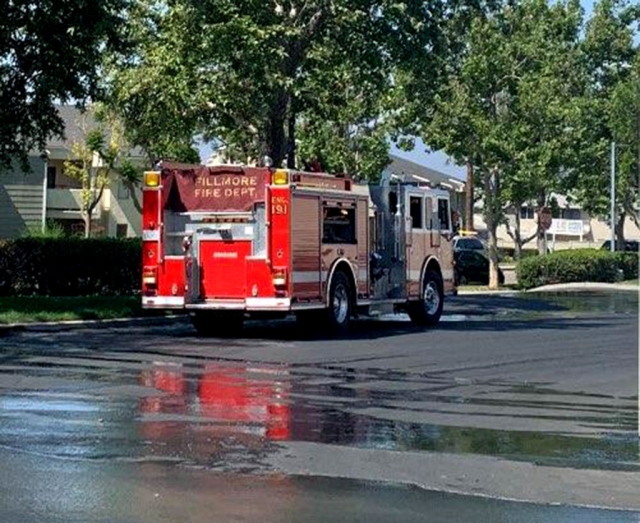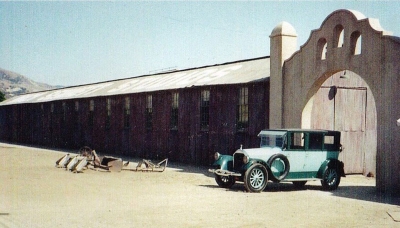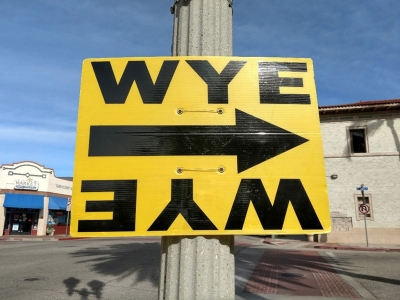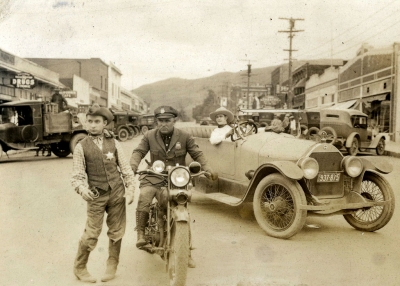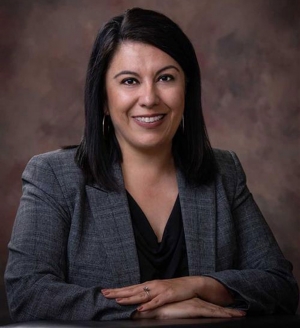|
By Anonymous — Wednesday, June 9th, 2021
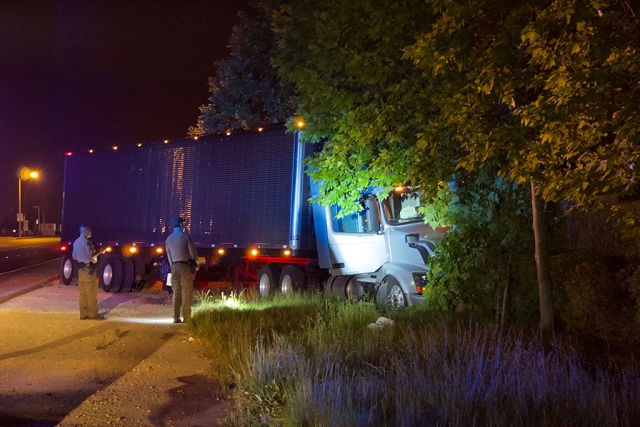 On June 4th, 2021, at 11:30pm, a Ventura County Sheriff’s Department unit was flagged down by a civilian concerning a possible injury collision in the area of Ventura Street and Mountain View. The police unit responded with lights and sirens to the reported area. Upon arrival the deputy found a semi-truck crashed into a brick wall near The Bridge’s homes. Police units shut down eastbound Ventura Street #2 lane for about 30 minutes. No injuries were reported. Photo courtesy Angel Esquivel—AE News. Enlarge Photo |
|
By Anonymous — Wednesday, June 9th, 2021
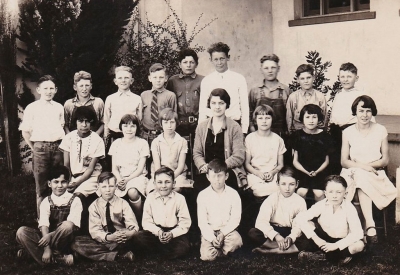 Bardsdale Grammar School class circa 1925. These children would have benefitted by the Bardsdale School “Congress of Mothers” who provided lunches for school children. Enlarge Photo Courtesy Fillmore History Museum One of our readers asked what people ate “back then” and particularly about what children took to school for lunch. It was also quite easy for ranchers and others to bring in small game, so the housewives needed to know how to cook it. The cookbooks all contained recipes for fried rabbit as well as rabbit stew and hasenpfeffer (rabbit stewed with onions, cloves and cinnamon). In the 1924 “Cook Book” put out by The Ladies’ Aid Society of the Piru M. E. Church, Mrs. S. L. Glaze recommended stewing the rabbit, making a gravy and pouring the meat and gravy over hot biscuits. Game birds, including geese, ducks, snipe and woodcocks would be roasted, stewed or baked in a pie. If you either didn’t have or didn’t want meat, there were other alternatives for a main dish such as Boston Roast, a recipe given by Mrs. Frank Padelford: “Three cups red or kidney beans, put through grinder or sieve; one cup bread or cracker crumbs; one tablespoon finely chopped or ground onion; one cup finely grated cheese; one and one-half teaspoon salt; one-fourth teaspoon paprika or pepper. Mix and add milk enough to make it soft enough to pack together. Bake in buttered pan or casserole thirty minutes in a slow oven. Serve with a tomato or onion sauce. It is good served plain.” In the “People’s Home Library” published in 1920, Mrs. Alice G. Kirk of Cleveland, Ohio, gives extensive directions on how to prepare sandwiches for school lunches.A different kind of bread should be used for each day, or a combination of breads to relieve the monotony. She suggests the following fillings: “Meat sandwiches. - Cold roast beef chopped and slightly salted, between slices of white bread. Chicken, cut very thin and salted; white bread. Boiled ham, chopped very fine, mixed with a very little dry mustard; brown bread. Roast veal, finely chopped, with a few olives mixed in; brown bread. One very thin layer of chopped ham and a slice of chicken; wheat bread. Corned beef shaved very thin; white bread. Salad sandwiches. - Lettuce leaves on white buttered bread, with a very little French dressing made by mixing a teaspoon full of oil with few drops of lemon juice and a little salt. Chopped watercress on buttered bread, white or brown, with salt. Very thin slices of cucumber, with salt; white bread. Nasturtium leaves, with French dressing or salt. Lettuce with a little cream cheese spread on it, and salt or lemon juice.Watercress and cream cheese. Celery, chopped very fine and mixed with either French dressing or a little mayonnaise, or merely with salt and lemon juice; whole wheat bread. Chopped green peppers mixed with cream cheese.” It is unlikely a housewife in the Santa Clara Valley sent her children to school with a sandwich of nasturtium leaves or finely chopped roast veal. Bardsdale School “Congress of Mothers” (a forerunner of the PTA) was organized in 1925 or 1926.Soon the group noticed that many of the small children who walked to school each day arrived without breakfasts and sometimes with little lunch. They decided to do something about it. The mothers began to take turns bringing the children hot lunches which they prepared at home. After lunch two of the mothers would stay and wash the dishes. Soon they raised enough money with cake sales to purchase cooking utensils and hot plates. They cooked lunch in the hallway and served the children on tables built for that purpose. At Sespe Elementary School in the 1950s and earlier, before there was a cafeteria, the children ate their lunches under the pepper trees at the west end of the school yard. This was the location come wind, cold weather or 100+ degree heat. The only time when lunch was eaten inside was when it was raining. Milk was purchased each morning by sending your lunch money to the office. Students vied to be the person collecting the lunch money. (Anything to get out of class for a few minutes.) Graduation from 6th grade meant moving on to the Junior High School then located in the same buildings as the High School. Lunch was hot and in the cafeteria. The women employed in the cafeteria made all lunch meals from scratch, even the hamburger and hot dog buns. We have come a long way from the early days of school lunches. Today the staff may not make every meal from scratch but every child who needs a lunch or breakfast will get one at school, even during covid when meals were still provided in a drive setting. |
Now Hiring: Deputy City Clerk
The City of Fillmore is seeking a detail-oriented and highly organized professional to join our City Clerk’s Office as Deputy City Clerk. This key role supports City Council operations, maintains official records, ensures legal compliance, and helps uphold transparency in local government. If you’re passionate about public service, governance, and supporting elected officials, we encourage you to apply. Learn more and apply at www.fillmoreca.gov.
|
By Anonymous — Wednesday, June 2nd, 2021
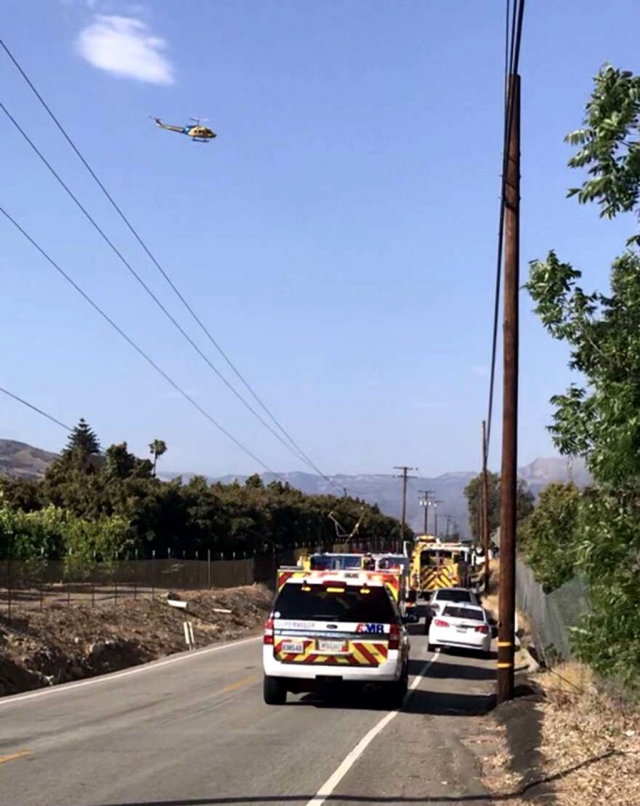 On Sunday, May 30, 2021, at 4:46pm, the Ventura County Fire Department, CHP, and AMR Paramedics were dispatched to a heavy traffic collision in the area of Sycamore Road, north of Highway 126. Arriving on scene fire crews reported a 2015 Nissan Altima travelling eastbound on Sycamore had severed a utility pole, with wires down. One person was reported in the roadway with another person trapped inside the vehicle. Fire crews were able to extricate the person trapped in the vehicle; the person in the roadway was declared deceased. He has been identified as David Brown, 39, of Fillmore, a former volunteer Fillmore Firefighter until 2017. A VCSO helicopter was also in the area but was canceled by fire crews once ambulance transport made patient condition unknown. Ventura County Sheriff ’s Department units were also on scene. CHP shut down Sycamore & 7th Street/Hwy 126 & Sycamore until 8:00pm. Photos courtesy Angel Esquivel-AE News. Enlarge Photo |
|
By Ventura County District Attorneys Office — Wednesday, June 2nd, 2021
District Attorney Erik Nasarenko announced today that former Ventura County Sheriff’s Deputy Leonard Herrera Lopez (DOB 08/06/71), pled no contest to two misdemeanor offenses involving a female inmate at the Ventura County Jail. Lopez was charged with engaging in consensual sexual activity with a female inmate, a violation of Penal Code section 289.6(a)(2), and with entering the cell of the same female inmate without another employee present, in violation of Penal Code section 4021(b). On September 6, 2019, the female inmate was assigned to a custody unit under Deputy Lopez’s control and supervision. Lopez entered the inmate’s cell unaccompanied by other jail staff in the early morning hours of September 6, 2019. Lopez kissed and touched the inmate, which constituted the sexual misconduct with her. The inmate later reported Lopez’s conduct to other jail staff. The Sheriff’s Major Crimes Bureau immediately launched a comprehensive investigation. Under state law, inmates are incapable of providing legal consent to engage in any sexual activity with custodial staff. Lopez is scheduled to be sentenced on June 24, 2021, at 1:30 p.m. in courtroom 14 of the Ventura County Superior Court. Lopez faces a maximum possible sentence of 180 days in jail and one year of probation. |
|
By Anonymous — Wednesday, June 2nd, 2021
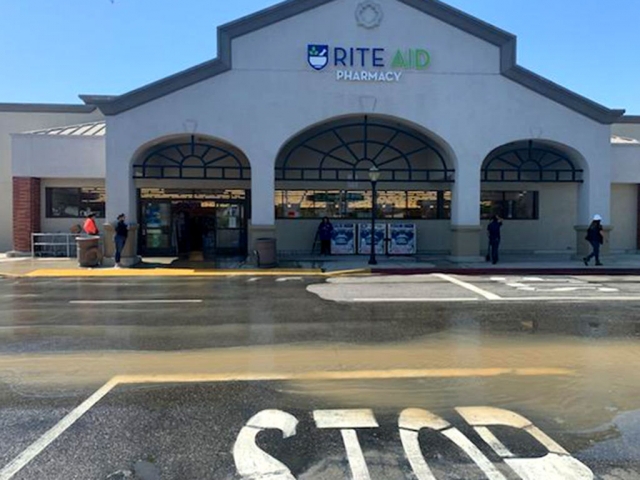 Rite Aid was closed Tuesday morning, before 10am, due to severe flooding. Pressurized water was rising through the floor according to Fillmore Fire Chief Keith Gurrola, possibly compromising the foundation. The rising water was 4 to 5 inches below the electrical outlets, being monitored by Fillmore Fire. Electricity was still on at noon. Preparations were being put in place to preserve the refrigerated medications in the pharmacy in case the electrical was shut off. Hardhats were required for all personnel entering the store. Enlarge Photo |
 This year’s 2021 class of Alan Peterson scholars. (l-r) Evan Alamillo who will attend CSU Channel Islands, Estefany Gonzalez who will attend Ventura College, Mariam Bazurto who will attend UC Davis, and Olivia Palazuelos who will attend Fresno State. Enlarge Photo By Anonymous — Wednesday, June 2nd, 2021
The Santa Clara Valley Wellness Foundation Scholarship Committee have selected their 2021 class of Alan Peterson Scholars. For the 11th consecutive year, four outstanding high school seniors will be awarded $1,000 renewable scholarship for their college education in the field of medicine. The candidates were selected not only for their overall grades but also their participation in the community, leadership, and desire to help their community when they complete their college degrees. Applications were accepted from students who reside in the cities of Fillmore, Piru, and Santa Paula. Each scholarship recipient went through an application process including submission of personal essay, letters of recommendation, and a board panel interview. The 2021 class of students who will receive scholarships are from Fillmore High School - Mariam Bazurto, attending UC Davis, Evan Alamillo, attending CSU Channel Islands, Olivia Palazuelos, attending Fresno State, and Estefany Gonzalez, attending Ventura College. “Every year that we go through the interviews, the bar is raised by the students themselves. All students are so bright and of such high caliber. It makes it hard to choose the finalists.” says Gloria Camarillo, Executive Director for the Santa Clara Valley Wellness Foundation. “The Foundation is able to support local youth in furthering their college education through the generous donations from private and community donors.” Visit the website www.scvwf.org to find out more information on the various programs for the community. Medical professionals, have you been wanting to give back to your community and don’t know where to start? We are actively scouting for medical professionals that share the vision of providing the opportunity to youth to experience what the medical field has to offer. Please contact the Executive Director, Gloria Camarillo, telephone 805‐320‐9049 or email gcamarillo@roadrunner.com to discuss the opportunity. |
 On Thursday, May 27th, FHS Track and Field competed in the Citrus Coast League Championships. (Above) Amani Hooker, who is the Citrus Coast League Champion for the 100m and 100m Hurdles. Enlarge Photo By Epi Torres — Wednesday, June 2nd, 2021
On Thursday, May 27th, 26 individuals from the Fillmore Track and Field team traveled to Carpinteria to compete in the Citrus Coast League Track and Field Championships. In order to be able to compete in this meet, athletes had to meet qualifying standards during the shortened competitive season. These 26 individuals raced, jumped or threw 53 times and established many personal best throughout the day. The first running event was the Girls JV 1600 Meter. Andrea Laureano circled the oval 4 times to capture second place in this event with a time of 6:44. 20. Later in the meet, Andrea ran a personal best in the 800, by finishing in third place in a time of 3:02.74. The Frosh-Soph Boys 1600 Meters followed with Kobe Lizarraga finishing in third place and posting a personal best of 5:12.13, he was followed by teammate, Josh Estrada who finished in 4th place in 5:16.06. Kobi would also run a personal best 800 in 2:20.51, placing second in this event. Josh would double back in the 3200 meters, running to a second-place finish in 11:49.79. Alianna Tapia was the lone distance star for the Flashes in the Varsity division. Alianna ran two personal bests by perfectly pacing both the 1600 meters and 3200 meters in times of 5:35.23 and 12:41.93. Perhaps the feature race of the meet was the Boys Varsity 1600 Meters where Fabian Del Villar, Rey Laureano, and Camilo Torres swept the first 3 places. Rey and Camilo posted personal best times of 4:34.26, and 4:34.28. Fabi Del Villar, Fillmore’s standout distance star, once again rewrote the record books, by taking down the 1600 Meter Record (converted) of 4:20.23. This record was held by Gerardo “Yayis” Vaca and established in 1988. Fabi ran to the front and in a solo effort, never looked back posting his new school record of 4:20.02. Dave Bustos and Matt Munoz also ran the 1600 and finished in 10th and 12th in 5:14.62 and 5:19.62, both season bests in this event for both athletes. Fabi, Camilo, and Erick also captured a one, two, three finish in the 3200. Fabi and Camilo subbed 10 posting times of 9:36.03 and 9:48.48. Teammate Erick Gutierrez ran a 10:31.89. Probably one of the most exciting races was the Varsity Boys 800 Meters. Senior Rey Laureano appeared to be completely out of the race right from the beginning. In a two-lap race, with only four competitors, Rey seemed to fall further behind as they passed through the 200-meter mark, it didn’t look much better at the end of the first lap where he trailed the leader by 3 seconds. With 100 meters to go, Rey turns it on and caught the 3rd place runner, never slowing down and quickly approaching the two Santa Paula runners who were battling it out for first. In a Flash, he was by them, and won the race going away. This was as I’ve said, an exciting race. Rey stirred the cheering crowd and ran a personal best of 2:03.93. Angel Garcia ran a personal best 2:36.40 in the frosh/soph 800 meters. In the sprints, coached by Coach Frances Barnes, several athletes achieved personal bests. Top finisher in the 100 meters was Juan Alfaro 6th in a time of 11.93, followed by Angel Martinez 13th in 12.84, Alotl Aparicio 15th in 13.13. All three athletes established personal best times. Angel Martinez followed up his hundred running to a 14th place finish of 26.5 in the 200 meters. Alotl Aparicio ran the boys varsity 110 meter high hurdles and placed 4th in 19.39. Fillmore’s sprint ace, Amani Hooker captured 1st. place in both the 100 meters and the 100-meter hurdles. She clocked personal best times of 13.34 and 16.32. She followed this up with a second-place finish in the high jump, where she clear a high of 4’6”. Angel Laureano was the lone competitor in the frosh/soph 400 and ran a personal best time of 63.43 to place second. The frosh/soph contingent of Kobi Lizarraga, Josh Estrada, Angel Laureano and Angel García placed second in the 4 x 400 in 4:18.31. The Varsity boys team represented by Rey Laureano, Fabi Del Villar, Juan Pablo Alfaro, and Matt Munoz also placed second in 3:44.13. The jumps coached by Mr. Dabbs saw several athletes perform well. In the boys varsity triple jump Brandon Gonzalez placed 3rd, in a personal best jump of 35’11.75. He was followed by Alotl Aparicio in 5th place, also in a personal best jump of 34’2”. Alotl followed that up, with a personal best in the long jump of 16’10” to place 6th. Teammate Juan Pablo Alfaro took third place in a personal best leap of 18’6.5 inches. Evan Alamillo tied for 4th place in the varsity high jump, reaching a height of 4’8”, and Natalie Cobian placed 5th in the varsity girls triple jump with a leap of 26’ 8”. In the weight events, coached by Tony Tafoya, the athletes continued the year-long tradition of placing among the best in the league. In the varsity shot put, Nathaniel Ocegueda placed second in a personal best of 46’10”, followed by Joesef Vargas 4th in 41’3”, Diego Meza 5th in 40’ 2”, and Justice Rodriguez 6th in 38’ 11”. In the frosh/soph discus, Sebastian Landeros tossed the implement 85’6” to capture first place in this division. He also placed second in the shot put with a toss of 32’ 2”. The varsity boys discus, Diego Meza led Fillmore’s weight men by placing second with a toss of 121’ 10”. Justice Rodriguez placed 4th in a personal best of 119’ 11”. He was followed by Joesef Vargas 5th in 116’ 8”, and Nathaniel Ocegueda 6th in 102’ 5”. The girls also competed well. In the shot, Ashley Yepez placed second putting a distance of 32’2”. She was followed by Kara Ebell 3rd in 28’4”, and Sadie Rico 5th in 26’ 4.5”. In the discus, Ashley Yepez placed first with a throw of 95’ 11”. Kara Ebell was 3rd in 28’ 4”, and Sadie Rico 5th in a personal record of 81’7”. On the day, Fillmore athletes claimed seven individual league crowns. This was accomplished by each of these athletes winning their individual event. Amani Hooker claimed league titles in two events, the 100 meter hurdles, and the 100 meters. Fabian Del Villar also claimed titles in two events, the 1600 meters and the 3200 meters, Rey Laureano claimed his title in the 800 meters. Sebastian Landeros won the boys frosh/soph discus, and Ashley Yepez also claimed her title in the discus. Our top three athletes in varsity events will next compete at the same venue on Saturday, June 5th at the CIF Southern Section Division 4 Prelims.14 Fillmore Athletes will compete at this event with the goal of qualifying to compete the following weekend at the CIF Southern Section Division 4 Finals. Resilience, and perseverance are two words that come to mind, when you think of our athletes, staff and families that found a way to make this season a possibility and also a success. Certainly, we were able to adapt to the circumstances of this difficult period of time, but we couldn’t have done it without your help, so for this, and for all you do, we thank you. This is the Fillmore Spirit. |
 Plane crash scene for the 1992 film Hero, located by the bridge on Center Street in Piru. Photos courtesy Fillmore Historical Museum. Enlarge Photo By Anonymous — Wednesday, June 2nd, 2021
Courtesy Fillmore Historical Museum From the earliest days of film Hollywood has loved Fillmore and the Santa Clara Valley. Historic Rancho Camulos was the setting for Ramona one of the first feature films. Directed by D W Griffins in 1910, starring Mary Pickford as Ramona and Henry B Walthall as Alessandro the film is based on the book written by Helen Hunt Jackson. It uses the story of two young lovers to illustrate the poor treatment of California’s Native Americans. Camulos became known as the “Home of Ramona.” Due to the popularity of the film it became a regular tourist stop for travelers. Because of our rural charm and proximity to Hollywood our little town is regularly transformed with props and sets. A 1924 photo shows Cowboy film star Tom Mixx astride amotorcycle on Central along with Fillmore Chiefof Police Earl June. Central Avenue was filled in with sand and cactus to transform Fillmore into 1940’s Arizona for the 1987 film In the Mood, starring Patrick Dempsey. In the 1984 IMAX documentary Speed by director Greg McGillivraya hot rod races around town, outruns the police, crashesinto a bale of hay at the Sanitary Dairy, and Fillmore is Fresno. For the 1990 film Almost an Angel starring Paul Hogan many parts of Fillmore were used including a house on Foothill Drive, Roan Mills Bakery’s building, and the Town Theater. An entire church was built over Dr. Beer’s office on Kensington. Dustin Hoffman was the main character in the 1992 film Hero. For the plane crash scene at the beginning of the movie a wrecked 727 airplane was trucked from Mojave to the site by the bridge on Center Street in Piru. Gas lines and explosives filled the river bed with smoke and fire for this dramatic scene. Two large sets were built for the 1982 film Chapman. A replicas of the studios used by Mack Sennett was built on a bare field in Bardsdale and the Sanitary Dairy had a face lift for another part of the movie. Watch La Bamba and you will see many Fillmore sites including the row of palm trees on highway 23 and the green bridge crossing the Santa Clara River. What do Seabiscuit, the Lone Ranger, and Fear Factor have in common? They all used the Fillmore and Western Railway for filming. In 1991 Short Line Enterprises moved their filming from Newhall Ranch to Fillmore and in 1996 it became a division of FWRY. Using tracks leased from the Ventura County Transportation Commission over 400 films, TV series, music videos, student films, and commercials have been filmed using the Railway. Disney built the tunnel on the east end of town for filming in 2008. The Depot at the Fillmore Historical Museum has been featured in many movies. It has been an Eastern European town for JAG in 1998 and 2003. Using model trains and real trains the depot and other Fillmore locations were used for a Coke commercial. The train station in City Slickers 2 features the Depot. Buffy the Vampire even paid a visit to the Depot. An internet search for “Film Production List, Fillmore, California” will bring up pages of films, TV shows, and commercials that have been filmed in Fillmore. White trailers and yellow parking signs are a regular sight around town. They let us know that film crew has come to town again. |
|
By Anonymous — Wednesday, May 26th, 2021
After conducting a nationwide search and a lengthy process of gathering input from employees of the district and members of the community, which included the review of over 21 applicants, the Fillmore Unified School District Board of Education is honored to announce Christine Schieferle as the finalist to replace Interim Superintendent Dr. Chuck Weis. The Fillmore Unified Board of Trustees will be entering into contract negotiations with Mrs. Schieferle and is expected to confirm an offer of employment at its June 1, 2021, regularly scheduled Board meeting. Mrs. Schieferle currently serves Santa Paula Unified School District as the Deputy Superintendent of Educational Services and has previously served as Director of Curriculum and Instruction at the Ventura County Office of Education. She has also served as an Elementary Principal, Continuation High School Principal, High School Assistant Principal and Middle School Teacher in Fillmore Unified. In each of these roles, she has achieved high expectations with compassion, dedication, comprehensive support, and a commitment to strong collaboration and communication with students, families, staff, and the community. Fillmore Unified Board President Tricia Gradias stated “We are excited to bring our strong leader, Christine Schieferle back home to lead our district. We are very fortunate to have selected Christine Schieferle as our finalist for the Superintendent position. After our extensive search and interview process with many very strong competitors, we found Christine, who comes from our school district. She is an excellent instructional leader, cares deeply about Fillmore and Piru and our children and brings us new perspectives and an excellent vision for Fillmore Unified. She is known as a strong communicator and collaborator who exemplifies transparent leadership, integrity, and respectful relationships. Her expectations for herself and others are very high and always centered on accelerating student achievement. In addition, her leadership goals are centered around creating inclusive and equitable learning opportunities for all district students. She embraces challenges that improve the organization and is driven to constantly improve relationships and bring people together to improve the lives of students. Mrs. Schieferle was born, raised and currently resides in the community of Fillmore. She earned a bachelor’s degree in psychology from San Diego State University and a master’s degree in educational leadership from California State University, Northridge. “I care deeply about our community and believe in our students. I look forward to the 2021-22 school year and am ready to welcome our students and our families back to full-time, in-person instruction after the many challenges and trauma our community experienced during the past year. I am also committed, as your new Superintendent, to build trust and belonging among our students, families, and staff, while holding high expectations and accountability. I stand by the vision of the Fillmore Unified School District to ensure that each student is recognized, valued and inspired to be a life-long learners and prepared to be a contributing member of society.” |
|
By Anonymous — Wednesday, May 26th, 2021
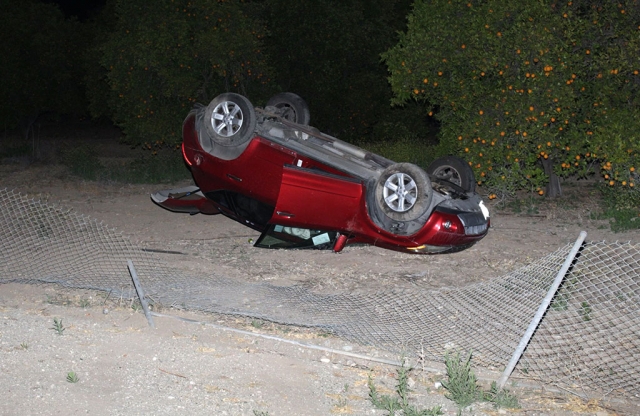 On Sunday, May 23, 2021, at 10:10pm, Ventura County Sheriffs, Fillmore City Fire (ME191 R91), and AMR paramedics were dispatched to a vehicle vs fence. On arrival sheriff deputies found an overturned vehicle located at Goodenough Road and A Street. The driver apparently lost control on the curve and crashed into the fence, landing on its roof in an orchard. The driver was not injured and was able to get out before fire crews were on-scene. No other vehicle was involved. Photos courtesy Angel Esquivel-AE News. Enlarge Photo |


